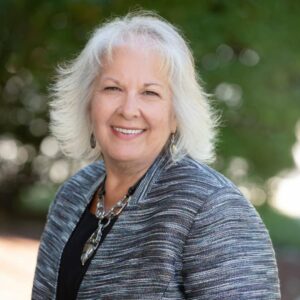Part 2: CCRC shopping: One couple’s view
[Editor’s note: This article is Part 2 of a two-part article on what savvy seniors are looking for in a CCRC before they're willing to call it "home." Click here to read Part 1 of the journey.]
As my wife, Sandi, and I continued our road trip to visit and evaluate multiple for-profit continuing care retirement communities (CCRCs) across six states, we observed many different living environments, including various approaches to involving residents in local administrative control and in fostering communication between residents and staff.
THE LIVING ENVIRONMENT
Basically, the individual apartments varied greatly from facility to facility and the rental cost factor seemed to have little to do with it. While some of the apartments we stayed in appeared to be clean, a closer look revealed traces of mildew on shower curtains and doors and kitchen areas that received cursory cleaning before occupancy. Linens were fully laundered and clean. We toured many model apartments in many facilities and, while well cleaned and in general good condition, we still noticed mildew in some bathroom situations as well as a dirty toilet in one.
Cleanliness of hallways, public area restrooms, dining areas and activity areas varied greatly. In many we observed dirty carpets badly in need of a shampoo or replacement and stairways littered with trash. In some, the public bathrooms were littered with toilet paper, floors were splattered with urine and some toilets were not flushed. At another facility, the restrooms were clean and fresh-smelling during our early morning check.
At one facility, I asked management about the spotted carpet in hallways. I was told "there was presently no money in the budget for replacement, but it was on the agenda." In another, "carpets were being replaced in the near future."
At several facilities, as we sat down for breakfast, we noticed food and litter under the tables left over from the previous evening's meal. Sanitary conditions seemed better in facilities with restaurant type dining and with experienced personnel. Bottom line: Poor supervision of employees with little or no training in food service or cleanliness requirements cause substandard conditions which can easily be corrected.
One solution might be better training. Another may be to hire more experienced food service workers. Often, the servers we observed and talked to were high school students holding part-time jobs either before or after school or during vacation, most without proper training in food delivery or sanitation.
We recognize that fixing these issues will cost extra dollars. Budget constraints are a reality, and at for-profit companies, the corporate bottom line is obviously a priority. In reality corporate greed and stockholder demands have overtaken the concerns for resident care. Yet we hope that corporations will find ways to solve these problems, lest it appear to visitors that corporate greed and stockholder demands have overtaken the concerns for resident care.
Dirty restrooms cleaned once a day and filthy carpets are indicative of poor supervision and inadequate sanitation, which can place residents at risk. In large chains the supervision by regional management should include policies and procedures for sanitation and cleanliness. To us, it seems that such matters are left to more local control. But, quick turnover of local management, which can be as short as three months, places pressure on continuity of service with cleanliness of public spaces far down the list of concerns. You can be assured that new resident recruitment will be the initial focus confronted by new management not cleanliness, facilities management or resident welfare.
FOSTERING COMMUNICATION
In many instances client/administration communication was informal or nonexistent. In some, a resident council passed along concerns to central administration. In one independent living community, administrators held a regularly scheduled monthly “gripe” session allowing residents to present concerns and ideas. Some communities had suggestion boxes with forms available for residents to submit ideas or indicate problems.
Informal input from residents worked well where observed. Open-door policies encourage residents to communicate with administrators, but only when their suggestions or concerns are taken seriously. Many administrators who indicate an open-door policy do not listen in earnest to resident concerns—they listen, then do nothing.
A resident can tell easily when an administrator is seriously listening by observing body language such as eye contact and movement, body stance and signs of divided attention. In one instance, an administrator would listen to a resident for a second then return to his computer, then listen again and on and on. Residents (and visitors) recognize such signs of inattention as less-than-honest attempts at communication.
Similar responses were observed in a group session. The administration’s response to resident criticism of policy was perceived as a threat, and the discussion about the policy quickly evolved into a reprimand. Not one other resident stepped forward that day to offer advice or negative comment since the meeting’s atmosphere had been set by the initial response.
Communication had been successfully shut down by an administrator “doing his duty” but truly not open to either critical ideas or thoughtful suggestions from the residents served. Clearly afraid to deviate from the normal “safe” operating procedure set forth by the corporation, this administrator’s heavy-handed approach to openness completely negated any opportunity to increase communication between residents and management.
Still, many facilities listened carefully to resident suggestions for improvement. Especially important was the utilization of residents with special skills. At one location we participated in the initial exercise class led by a retired resident Physical Education teacher who specifically designed the class for older adults. In another, we attended an art exhibition displaying the artwork produced during the community’s first-ever painting class—a class that was suggested, designed and taught by a resident. Similar activities designed by residents with special skills have sprung forth in many locations throughout the country.
While creative use of resident talent is vital to self-determination, it is not a panacea. Many communities we visited seemed to employ unqualified or inadequately trained social and activity directors. We also observed many activities and programs that were well beneath the intellectual and ability levels of seniors and seemed to stem from outdated attitudes about aging.
As future generations reach retirement, their level of education, health needs and expectations will change. Can CCRCs and independent living facilities also change to meet the new needs of older adults? We certainly hope so. Our journey will continue over the next few months as we travel to non-profit, sectarian and nonsectarian communities in search of a location that fits our needs—a place to live happy, productive and interesting lives. We remain hopeful that we will discover our nirvana sooner, rather than later.
Donald H. Hoffman, EdD, is a professor emeritus of art at the University of Kentucky where he directed the Council on Aging/ Donovan Scholars Program, served as associate dean of the College of Fine Arts and taught art education and art therapy. He is the author of Rural Aging, Arts for Older Adults, An Enhancement of Life, and Arts Activities for Older Adults. He has testified before Congress on various aspects of aging, has attended White House conferences on aging, worked closely with the National Council on Aging and has been a Leadership Development Specialist with the NRTA/AARP.
Sandra M. Hoffman, RN, worked prior to retirement as a psychiatric nurse, a visiting nurse and an industrial nurse. She also spent many years as an antiques dealer, where she assisted numerous older adults with downsizing. The authors can be reached for questions or comments at dshoffman10@aol.com.
I Advance Senior Care is the industry-leading source for practical, in-depth, business-building, and resident care information for owners, executives, administrators, and directors of nursing at assisted living communities, skilled nursing facilities, post-acute facilities, and continuing care retirement communities. The I Advance Senior Care editorial team and industry experts provide market analysis, strategic direction, policy commentary, clinical best-practices, business management, and technology breakthroughs.
I Advance Senior Care is part of the Institute for the Advancement of Senior Care and published by Plain-English Health Care.
Related Articles
Topics: Articles , Executive Leadership , Facility management , Housing , Operations











